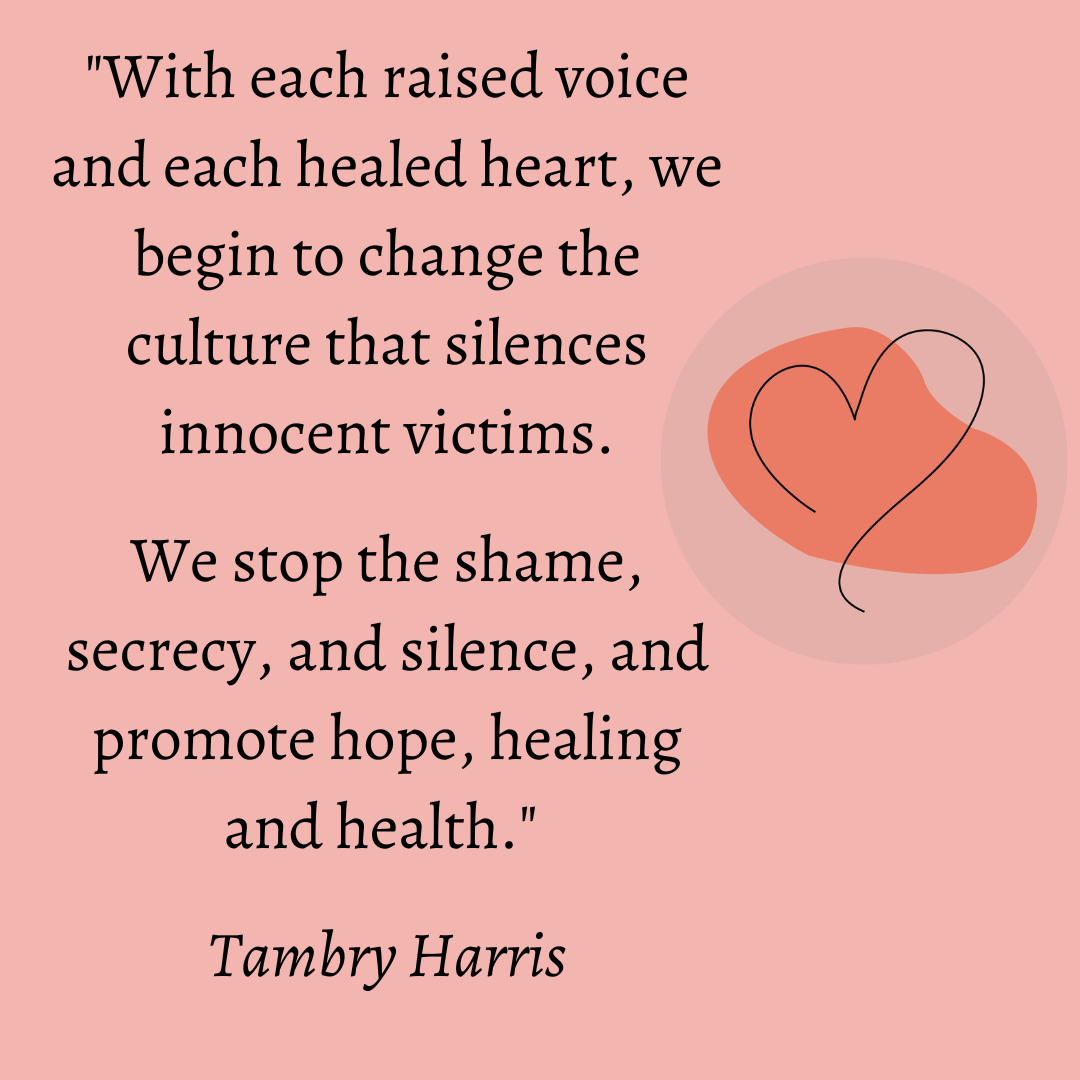Domestic Violence Awareness Month: Raising Awareness, Sharing Stories, Providing Resources
This month, communities and advocacy organizations are raising awareness about the signs of abuse and ways to thwart it through sharing survivor stories and providing actionable resources. The purpose of this blog is to provide resources and a community available to you. I offer my personal story as a way to provide a kindred spirit and a voice to this topic. Resources are provided so you can see a way forward.
If you are reading this as a supporter, thank you! This information should help you become an ally to your loved one.
The Statistics (from National Coalition Against Domestic Violence)
- An average of 20 people is physically abused by intimate partners every minute. This equates to more than 10 million abuse victims annually.
- 1 in 3 women and 1 in 4 men have been physically abused by an intimate partner, and 1 in 5 women and 1 in 7 men have been severely physically abused by an intimate partner.
- Millions live in daily, silent fear within their own homes.
- In addition, every year, millions of children are exposed to domestic violence. Domestic violence incidents affect every person within a home and can have long-lasting negative effects on children’s emotional well-being, and social and academic functioning.

The Wideness of the Issue
Domestic violence (also referred to as intimate partner violence (IPV), dating abuse, or relationship abuse) is a pattern of behaviors used by one partner to maintain power and control over another partner in an intimate relationship.
Domestic violence doesn’t discriminate. People of any race, age, gender, sexuality, religion, education level, or economic status can be a victim — or perpetrator — of domestic violence.
Domestic violence includes behaviors that physically harm, intimidate, manipulate or control a partner, or otherwise force them to behave in ways they don’t want to, including through physical violence, threats, emotional abuse, or financial control.

One Story (excerpts from Awakening the Light: A Survivors to Thrivers Going-Forward Story)
I share portions of my story to illustrate how quickly we can get trapped in a relationship, how we can be smart in many ways but have our vision clouded by love, how we can excuse bad behavior until we are pushed to our breaking point. My story describes how emotional and verbal abuse, along with intimidation tactics, can be as hurtful as physical violence. I do hope you feel a supportive, kindred spirit in my story if you find yourself in an abusive relationship or if you want to help a loved one who is struggling. If you are encouraged by my story, I invite you to read it in full and join me on the healing journey.
I was twenty-two, young and naïve. My belief that I was unworthy of being treated well filtered out seeing my fiancé’s true character and what life with him would look like. There were signs of a darker side to him but I felt like plans were already set in motion for our wedding so I needed to follow through on my commitment. Also, I felt like this charismatic guy had chosen me. Wasn’t I the lucky one?
The abuse began on the honeymoon. As I made it through each day, each week, each month, I would silently celebrate the milestones for surviving his abuse. When he would yell, berate and threaten me, I would sit clenching my fists, feeling my nails digging into my skin, seeking to transfer the pain that surged within me to the outside where I felt it physically.
Nothing I could do was right. I couldn’t lay a bag down without it being in the wrong place. If we went to a gathering or party, when we arrived home, all my actions were evaluated and criticized: how much I smiled, what I said, whom I engaged with, how long I talked to a person. And that was the easy part. That was when there was no anger attached. With the anger came curse words, yelling, degrading comments, and even having things thrown at me. At times, I would think that if he would just hit me, then the damage could be visible.
With each angry, hateful word, another stone was placed around my heart to try to protect it. With each stone placed, I became more numb, less me, more a shell of a person.
When you wall yourself off in this way, to protect that precious part of you, you certainly don’t want to be touched by the person whose attack led to the creation of that wall. How can you be intimate with someone who terrorized you? Yet, he insisted that sex was my duty as his wife and would force himself on me. When he was done with the conquering, I would move to the farthest edge of the bed and cry. It was decades before I could name this experience for what it really was: RAPE.
I would often drive across town to a friend’s house to escape my husband’s abuse. In my desolation, I knew that having that friend to escape to was a gift and an oasis. On the way to her home though, I would think, “If I just kept driving straight and hit that tree, it would all be over.”
After six months, I couldn’t take it anymore. My body started shutting down, and I could no longer ignore the impact of an abusive marriage. I decided that it was better to be divorced than deceased.
Types of Domestic Violence (mine were verbal, emotional and sexual)
Physical abuse: Includes any intentional act that causes injury or trauma through bodily contact, such as beating, slapping, punching, kicking, and choking/strangling.
Verbal abuse: Uses speech as an act of violence to decrease the victim’s self-confidence and adds to feelings of helplessness. Some examples include name-calling, insulting, making threats, or blaming.
Emotional abuse: Subtle and difficult to detect, emotional abuse erodes the victim’s self-esteem and creates psychological dependency on the abuser. Some tactics include insulting, gaslighting, being possessive, and isolating.
Sexual abuse: Unwanted sexual activity, with abusers using force, making threats, or taking advantage of victims not able to give consent. Examples include sexual harassment, sexual assault, or coercions.
Financial abuse: Occurs when the abuser controls the victim’s access to economic resources by restricting access to finances, preventing victims from working, and spending the victim’s money without their knowledge.
Digital abuse: Use of technology to harass, stalk, or intimidate the victim using tactics like monitoring the victim’s whereabouts, looking through the victim’s phone/computer, and constantly texting/calling/messaging.
Reproductive coercion: A form of power and control where the abuser strips the victim of the ability to control their own reproductive system. Tactics include sabotaging birth control, forcing pregnancy or abortions, and lying about methods of birth control.

I know this is A LOT. If you feel overwhelmed, breathe. AND know there are resources to support you. In October 15th’s blog, we will talk about the Power and Control Wheel to help you see even better what is going on in your situation. We will also discuss a Safety Plan for you to leave this unhealthy situation. For now, pay attention to the dynamics in your relationship. Notice what is going on in your body, as I mentioned in my story, that was what gave me the power to leave.

If you need immediate support, here are some US resources available. See our Resources Section for a list of resources for other countries.
- The National Domestic Violence Hotline, 1-800-799-7233 (SAFE), www.ndvh.org
- National Dating Abuse Helpline, 1-866-331-9474, www.loveisrespect.org
- National Sexual Assault Hotline, 1-800-656-4673 (HOPE), www.rainn.org
- National Suicide Prevention Lifeline, 1-800-273-8255 (TALK), www.suicidepreventionlifeline.org
- National Center for Victims of Crime, 1-202-467-8700, www.victimsofcrime.org
- National Resource Center on Domestic Violence, 1-800-537-2238, www.nrcdv.org and www.vawnet.org
- Futures Without Violence: The National Health Resource Center on Domestic Violence, 1-888-792-2873, www.futureswithoutviolence.org
- National Center on Domestic Violence, Trauma & Mental Health, 1-312-726-7020 ext. 2011, www.nationalcenterdvtraumamh.org
Know that you are worthy of a healthy, thriving life. We are here to encourage and support you.


 Talk To Tambry
Talk To Tambry
I am glad you have taken the time to engage with this blog. Sometimes it is helpful to process new insights that emerge. If you would appreciate brief time with a someone who understands, our Talk to Tambry offering is for you. For 30 minutes, you can receive support from Tambry who is a certified life coach, spiritual director and a survivor who has been on the journey as well. This is offered at a reduced rate of $50.




